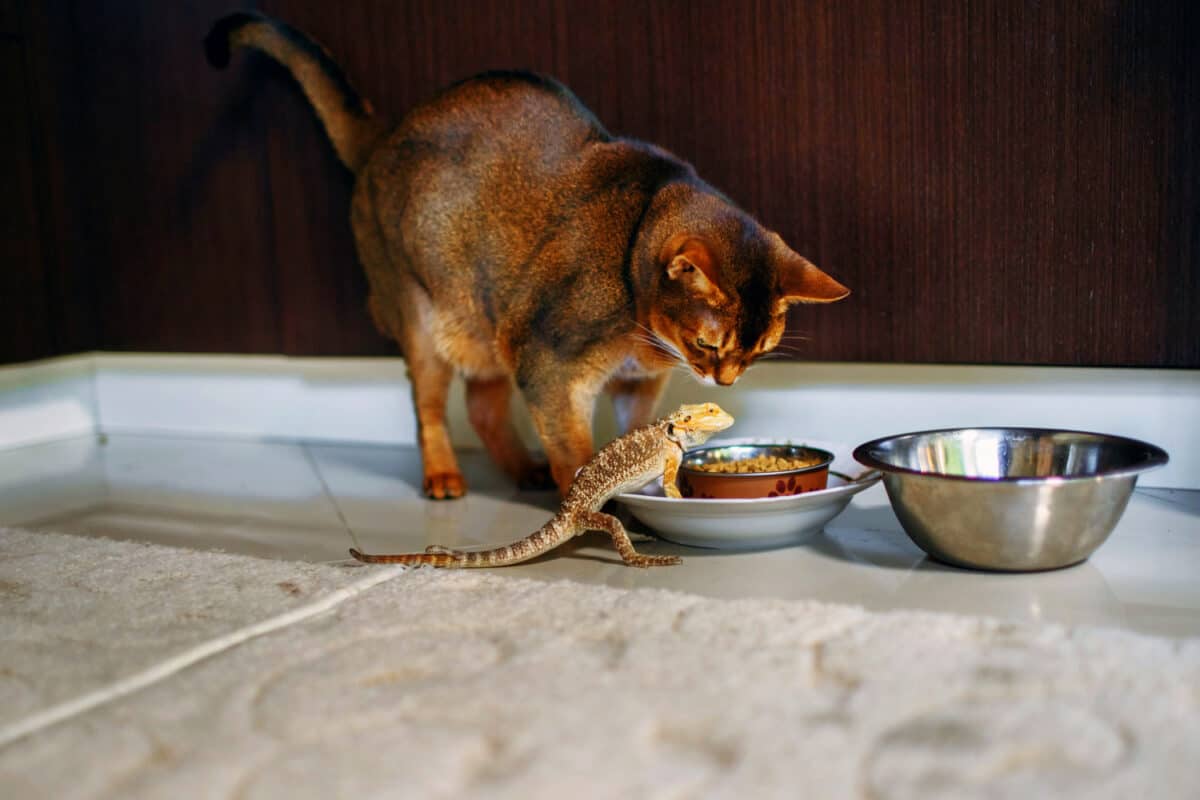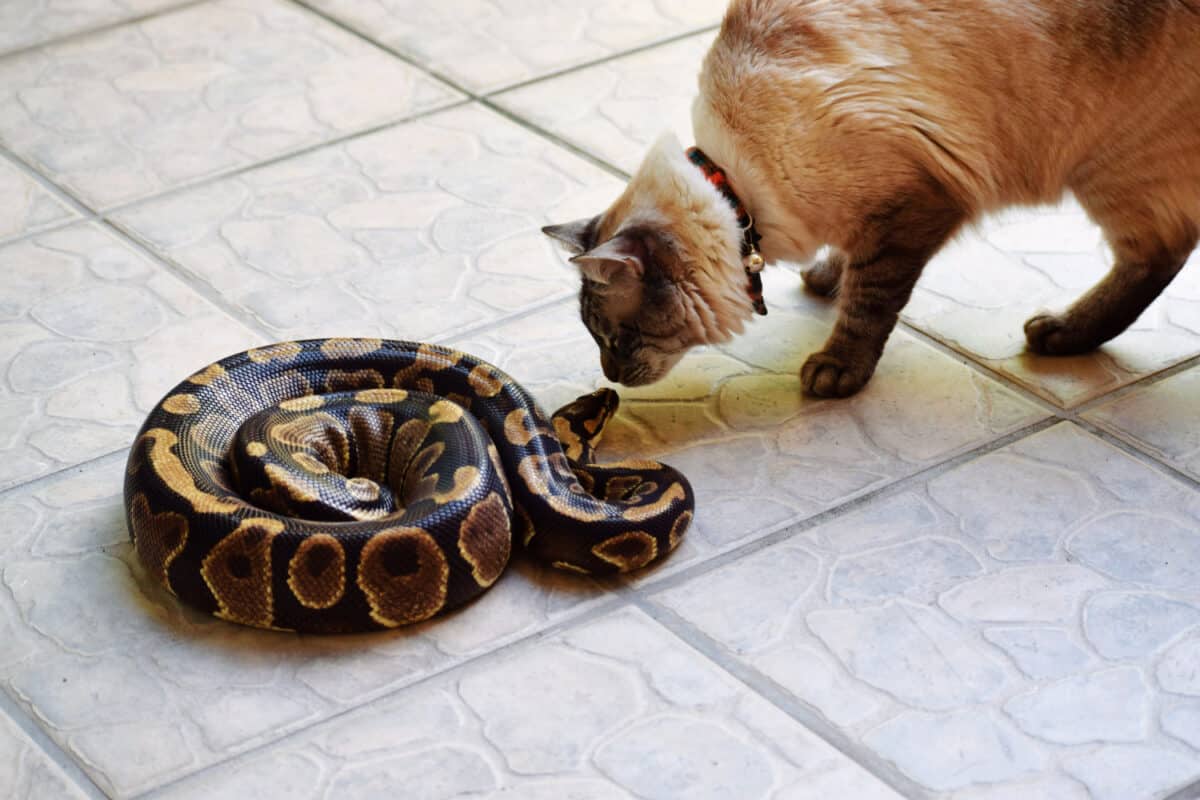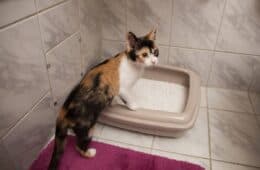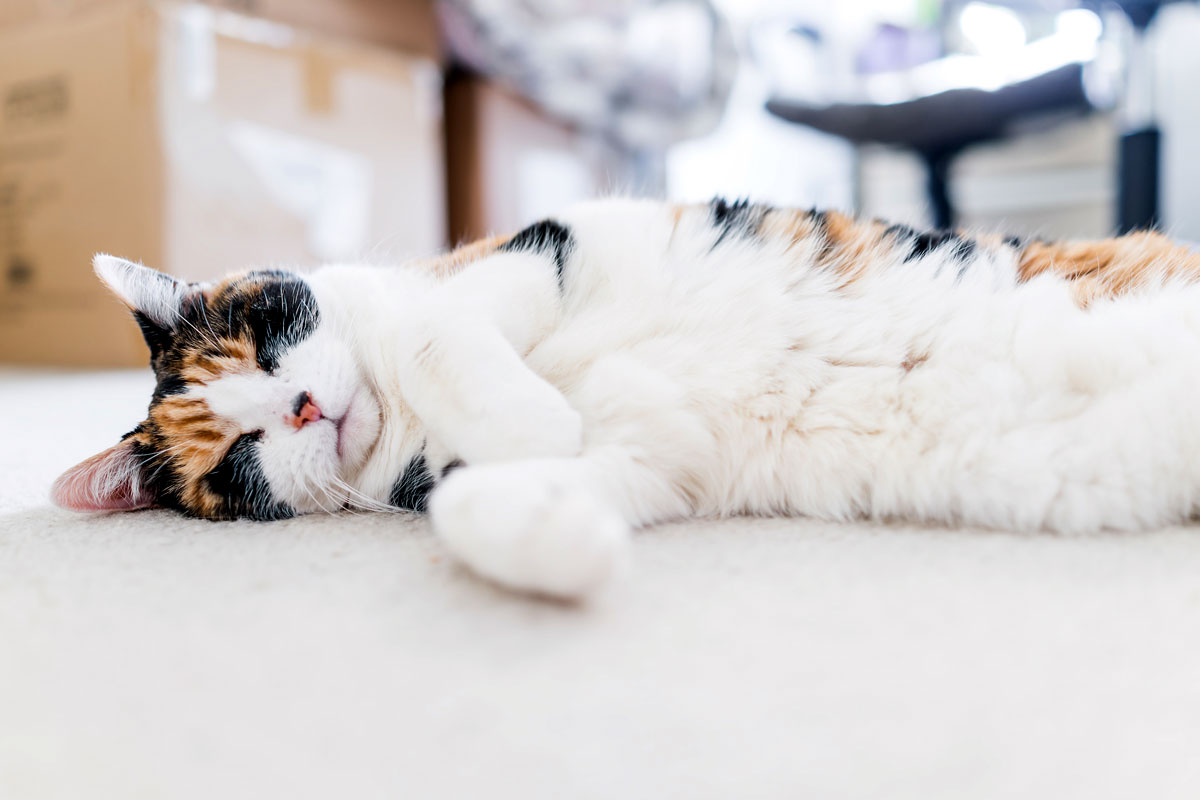Living under one roof with both cats and pet reptiles can be a complex endeavor. Cats are known to be intrigued by anything that moves, and reptiles, with their unique behaviors and characteristics, certainly catch their attention.
But can these diverse creatures coexist peacefully? Is it safe for a turtle, snake, or iguana to share a space with a cat? While we explore the ins and outs of this unusual pairing, you'll discover the careful considerations and precautions that must be taken.
Read on to learn how to maintain the health, safety, and happiness of all your pets while satisfying the curiosity of both human and animal members of your household.

Living with Cats and Turtles or Tortoises: A Guide
A Word from an Expert
Susan M. Tellem, a tortoise rescue pioneer from Malibu, California, started a national turtle and tortoise rescue in 1990 (www.tortoise.com). Her stance is clear: “We don't adopt turtles or tortoises to people who have cats.
Cats stretch out a paw, the turtle pulls into its shell. Sometimes the shell pinches the cat's paw. A turtle's scratch can be fatal for the cat.”
The Mobility of Turtles
Contrary to popular belief, turtles aren't just slow movers. They need exercise like any other pet and can move quickly with a purpose. Their quick movement and closing shell can intrigue a cat. This can lead to an unhealthy fascination.
Safety Measures for Turtles
If you aim to have a turtle and a cat in the same house, careful planning is needed. Turtles shouldn't be confined to tanks. Plan for a separate room or a large enclosure for the turtle, always out of the cat's reach.
Always prioritize safety, and consult experts if you're unsure. By following these guidelines, you can create a thriving environment for both your shelled friend and your playful cat.
SIGN UP FOR THECATSITE'S EMAIL UPDATES >
Living with Cats and Snakes: A Delicate Balance
Snakes usually live in tanks and don't move around much. Yet, even slight movements in the mulch or bedding can spark a cat's interest.
If you feed your snake live rodents, be prepared; your cat might be watching and plotting to join in. This puts more than just the mouse or rat at risk.
Potential Dangers: Bites and Threats
A cat's curiosity might provoke a snake to bite. Constrictors, in particular, pose a unique threat to cats. If a clash occurs between the two, it can be serious.
Depending on their size and aggression level, both animals could suffer injuries, or one could even kill the other.
The Complexity of Habituation
You might think that introducing your cat and snake to each other over time would help. In some cases, it might work, but the risk is too great.
The potential for harm to either pet makes this a chance not worth taking.
The Ultimate Solution: Separation
Ensuring that cats and snakes live harmoniously under one roof is a challenging task. It requires vigilance, understanding of their natural behaviors, and, most importantly, separation.
Though it might seem tempting to allow interaction, the safest path is to keep them apart.
By maintaining a respectful distance and providing a secure environment, you can enjoy the company of both without compromising their well-being.

Living with Cats and Lizards or Iguanas: A Careful Balance
Do you have a cat that seems fascinated by lizards or iguanas? It's not uncommon for cats to be drawn to these quick, lively creatures. But can cats and lizards or iguanas coexist safely in the same home?
Let's explore the dynamics and what you need to know to keep both pets happy and healthy.
Cats and Lizards: A Complicated Relationship
Lizards are fast-moving creatures that can trigger a cat's natural prey drive. Watching lizards inside a glass tank can be captivating for both humans and cats.
However, problems start when the cat figures out how to access these intriguing playthings.
The Risks to Cats
Lizards may carry toxins that can harm cats, even if they only play with them and don't eat them. This poses a hidden danger that many pet owners may overlook.
The Risks to Lizards
Cats can be lethal to lizards, and the risk goes both ways. The cat's attention might lead to a dangerous game with severe consequences for the lizard.
Cats and Iguanas: A Different Challenge
Iguanas, larger and more imposing, present a different scenario. To cats, they are still moving toys, but an iguana can defend itself once it reaches full growth. A swipe of its tail can deter a curious cat.
Vulnerable Stage
Until an iguana is fully grown, it remains vulnerable to cats. Cat scratches are particularly dangerous as they can introduce harmful bacteria into the iguana's body.
The Stress Factor
Even if a cat never attempts to break into the iguana's tank, the constant stalking can stress the iguana, impacting its overall health.
By recognizing the risks and taking proper precautions, you can enjoy the unique traits and companionship each pet offers. Your vigilance ensures a peaceful coexistence and keeps your pets safe and content.
Cats Co-Existing with Reptiles
If you want to have cats and reptiles in the same house, the best thing to do is to have a separate room for the reptiles. It should have a sliding bolt lock on the door, inside and out, high enough to be out of the reach of children.
You must mindfully focus on locking the door each and every time. It’s also a good idea to give the cat his meal when you visit the reptile room—it will keep him occupied as you go in and out. Never leave the door open. Cats are very fast.
Keep in mind, the health, safety, and happiness of all the pets rest with you.
SIGN UP FOR THECATSITE'S EMAIL UPDATES >
Related Reading:
Raising Cats & Birds In The Same House
Comments? Leave them using the form below. Questions? Please use the cat forums for those!
Note: We may get commissions for purchases made through links on this page.




3 comments on “Cats And Pet Reptiles [Turtles, Tortoises, Lizards & Iguanas]”